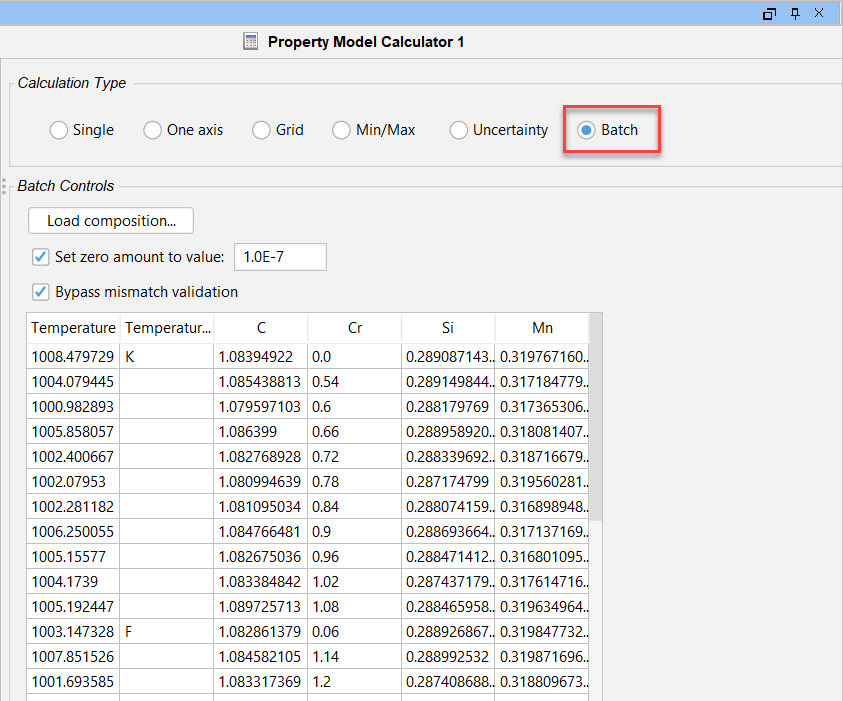Thermo-Calc 2021b Release Preview
Seven New Databases with Added Thermophysical Properties
The Thermo-Calc 2021b release is planned to include seven new databases, with a strong focus on the addition of new thermophysical properties.

A new calculation type in the Property Model Calculator, Batch Calculations, allows users to import data from a spreadsheet or other source. The table above shows data in Thermo-Calc that was read in from a spreadsheet.

A new Table View button in the graphical mode of Thermo-Calc will allow users to easily convert plot results into tabular data, giving users an easy way to view results in a table and ensuring that all calculation types have a way to export data.

Beginning with Thermo-Calc 2021b, Mixed Zero Flux and Activity Boundary Conditions will be able to be used as a function in diffusion simulations.